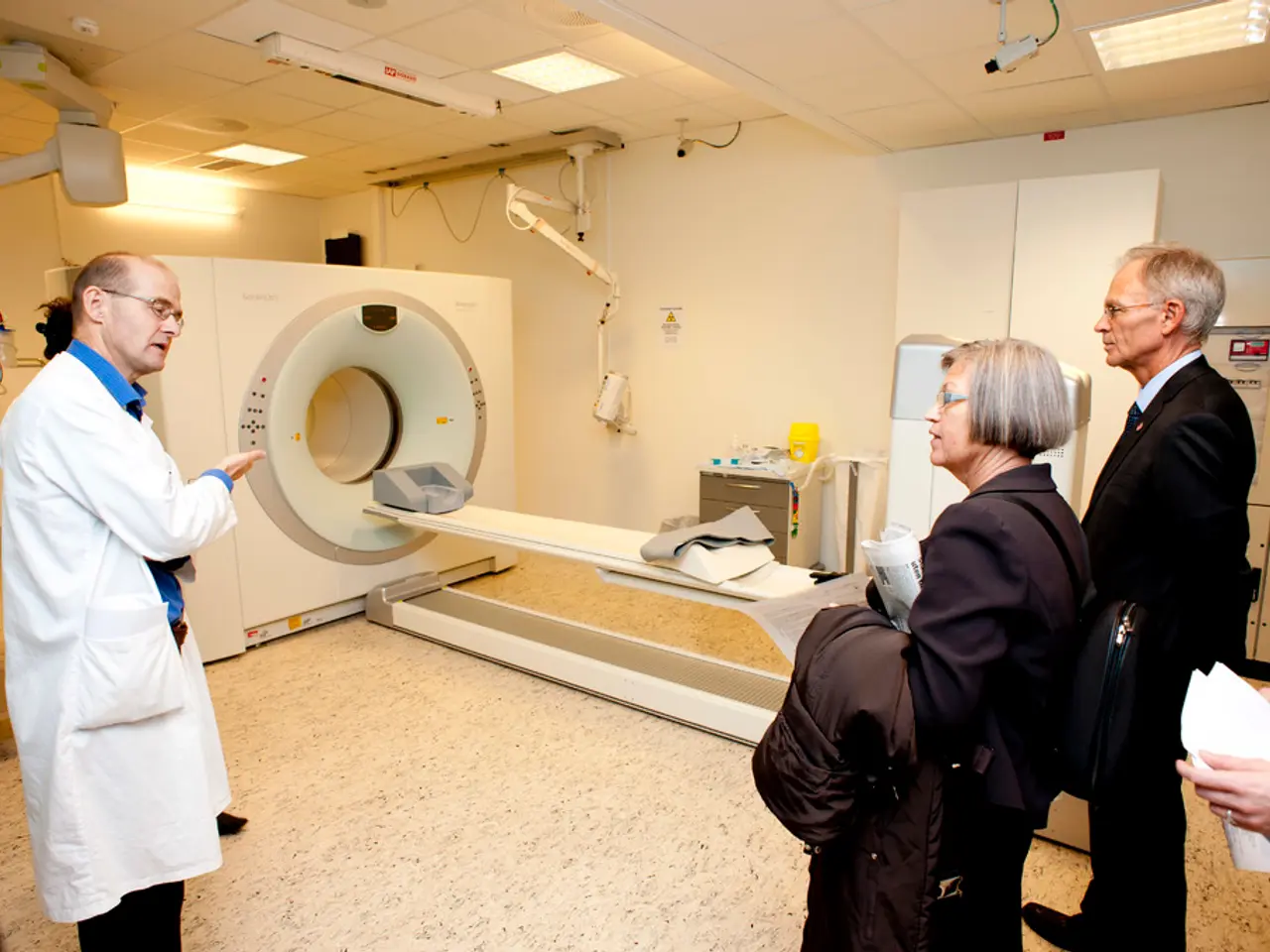Federal health care expenditures experience reduction, potentially causing significant impact on Kentucky's health sector
Rural hospitals across the United States are facing financial difficulties, with about 44% operating in the red, according to a KFF analysis. To address this issue, the Rural Health Transformation Program has been established as part of the One Big Beautiful Bill Act. This program aims to distribute $50 billion over five years to improve rural healthcare infrastructure.
The program's funding distribution is flexible, with each state required to develop and submit a Rural Health Transformation Plan for approval by the CMS administrator. The plan must address key areas such as improving access to healthcare, enhancing healthcare outcomes, and leveraging technology for prevention and chronic disease management. States have discretion in distributing funds among various purposes, provided they address at least three of the specified categories.
The program includes a range of eligible facilities, such as critical access hospitals, sole community hospitals, rural health clinics, federally qualified health centers, community mental health centers, and certified community behavioral health clinics located in rural census tracts. While facilities like FQHCs, community mental health centers, and grantees under section 330 of the Public Health Service Act can also be located in urban or suburban areas, the primary focus is on rural facilities.
States must submit their applications by December 31, 2025, for the entire five-year funding period. Half of the $10 billion each year from the Rural Health Transformation Program will be distributed evenly across states that have applied for it. The other half of the funds can be distributed by the administrator of the federal Centers for Medicare & Medicaid Services at his discretion, based on a state's rural population and rural health facilities.
The new law, which slashes more than $1 trillion from Medicaid over the next 10 years to help pay for tax cuts, includes guidelines on which facilities or areas qualify as "rural." However, there is expected to be a mad dash from lawmakers and providers to claim rural status in order to get a piece of the funding.
The Rural Health Transformation Program is expected to have a significant impact on states with large rural populations, particularly those that expanded Medicaid. For instance, Kentucky could lose an estimated $12 billion over 10 years due to the new law's reduction in rural Medicaid funding. On the other hand, the program helped secure the vote of Alaska moderate Republican Sen. Lisa Murkowski, with about 1 in 3 Alaskans being insured through Medicaid.
As the application deadline approaches, states are preparing their plans to take advantage of this opportunity to improve rural healthcare infrastructure. Pennsylvania Republican U.S. Rep. Rob Bresnahan expects money to begin flowing to his district as early as the beginning of next year. However, the National Rural Health Association CEO, Alan Morgan, has expressed concerns about the allocation, stating that they have more questions than answers.
For more information about 'Stateline', a nonprofit news network supported by grants and a coalition of donors, contact Editor Scott S. Greenberger. For questions about the Rural Health Transformation Program, you can reach Anna Claire Vollers at [email protected].
- The Rural Health Transformation Program, established as part of the One Big Beautiful Bill Act, aims to distribute $50 billion over five years to improve rural healthcare infrastructure.
- Each state is required to develop and submit a Rural Health Transformation Plan for approval by the CMS administrator, addressing areas like improving access to healthcare and leveraging technology for prevention and chronic disease management.
- States have discretion in distributing funds among various purposes, provided they address at least three of the specified categories, and must submit their applications by December 31, 2025, for the entire five-year funding period.
- The program's funds are flexible, with half distributed evenly across states that have applied, and the other half being distributed at the discretion of the CMS administrator based on a state's rural population and rural health facilities.
- The new law, which includes guidelines on "rural" facilities, may lead to a competition among lawmakers and providers to claim rural status to get a piece of the funding.
- States with large rural populations, such as Kentucky, could be significantly impacted by this program, with Kentucky potentially losing an estimated $12 billion over 10 years due to the new law's reduction in rural Medicaid funding.




